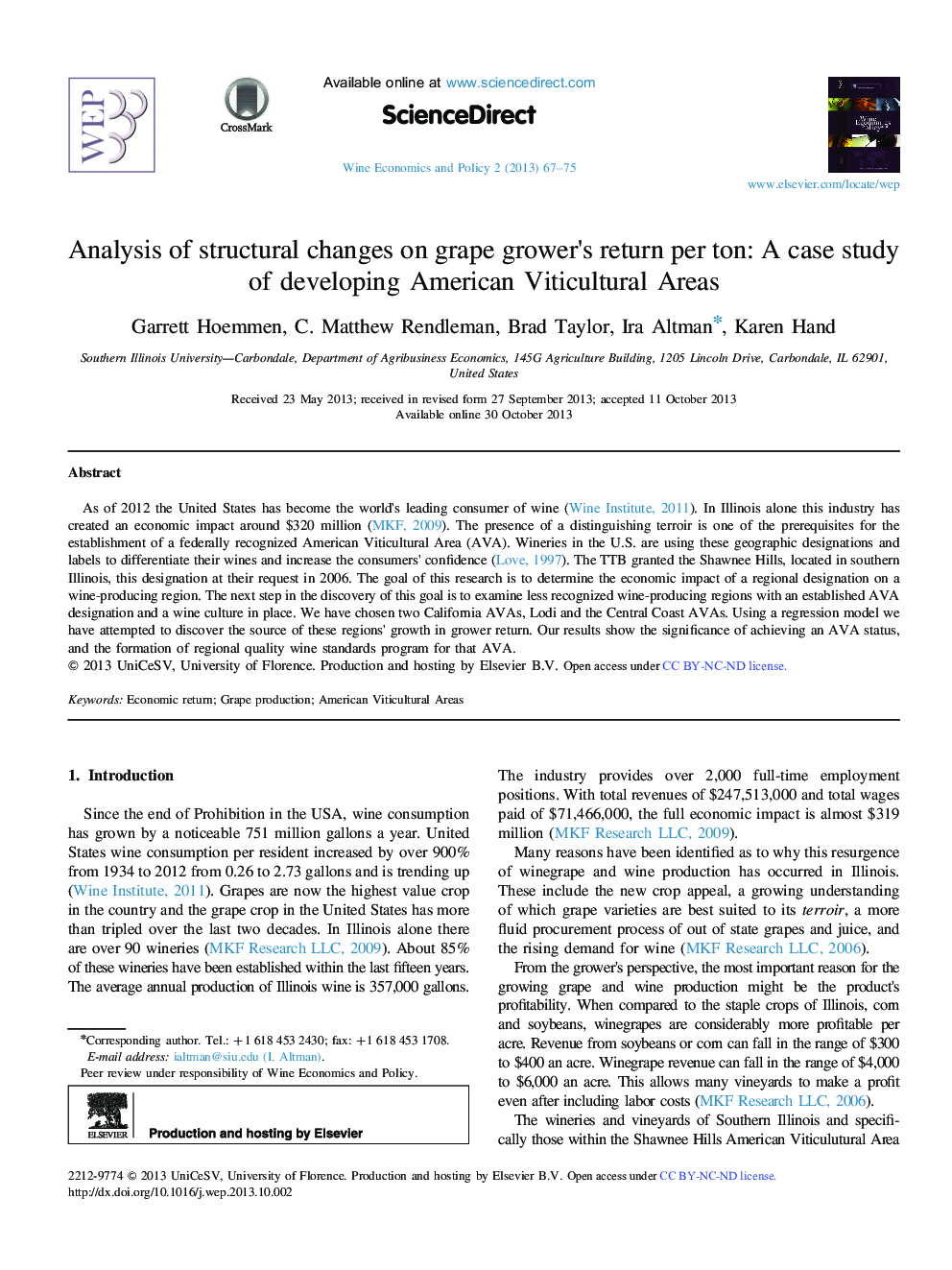| Article ID | Journal | Published Year | Pages | File Type |
|---|---|---|---|---|
| 1025401 | Wine Economics and Policy | 2013 | 9 Pages |
As of 2012 the United States has become the world's leading consumer of wine (Wine Institute, 2011). In Illinois alone this industry has created an economic impact around $320 million (MKF, 2009). The presence of a distinguishing terroir is one of the prerequisites for the establishment of a federally recognized American Viticultural Area (AVA). Wineries in the U.S. are using these geographic designations and labels to differentiate their wines and increase the consumers' confidence (Love, 1997). The TTB granted the Shawnee Hills, located in southern Illinois, this designation at their request in 2006. The goal of this research is to determine the economic impact of a regional designation on a wine-producing region. The next step in the discovery of this goal is to examine less recognized wine-producing regions with an established AVA designation and a wine culture in place. We have chosen two California AVAs, Lodi and the Central Coast AVAs. Using a regression model we have attempted to discover the source of these regions' growth in grower return. Our results show the significance of achieving an AVA status, and the formation of regional quality wine standards program for that AVA.
